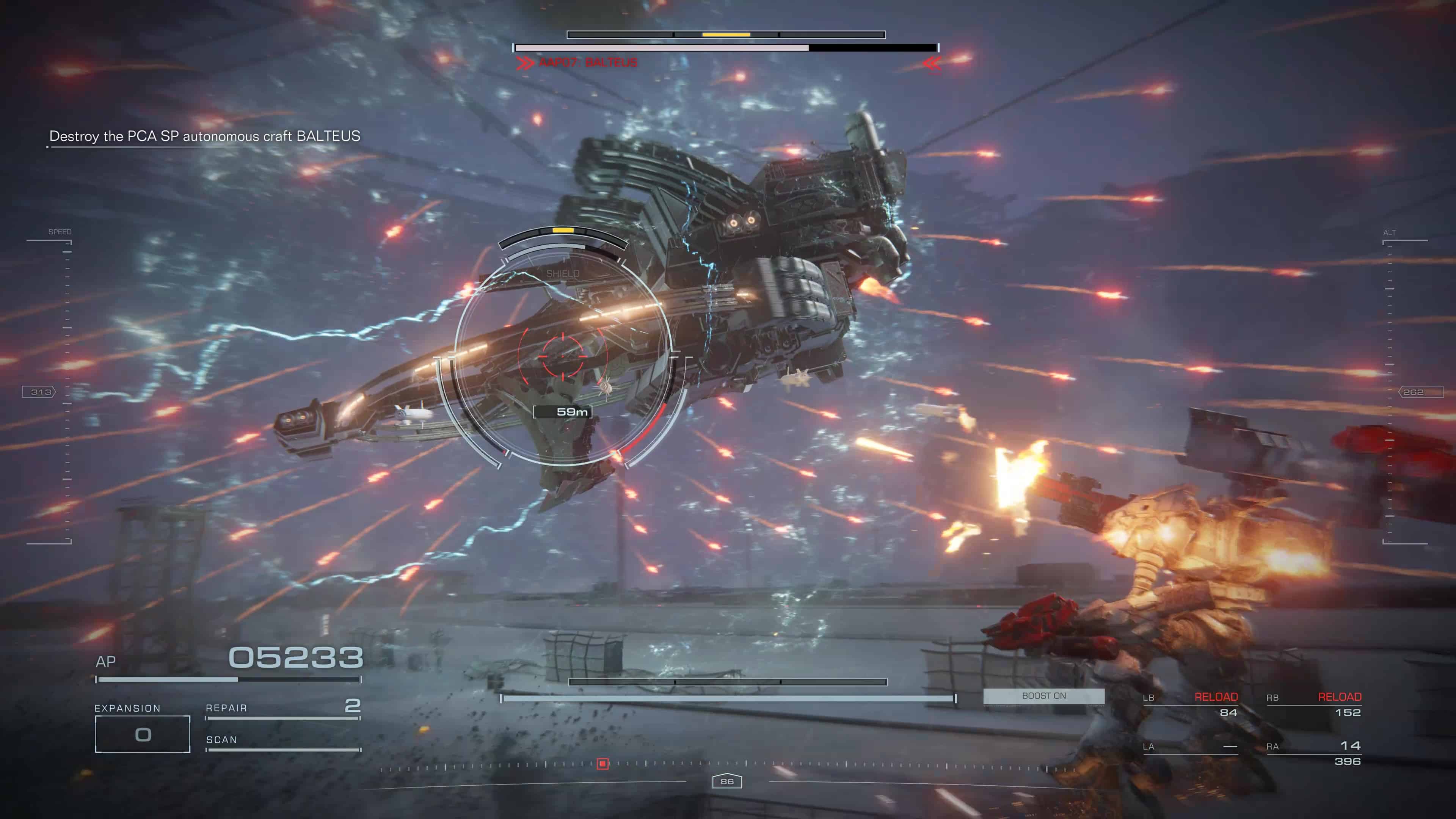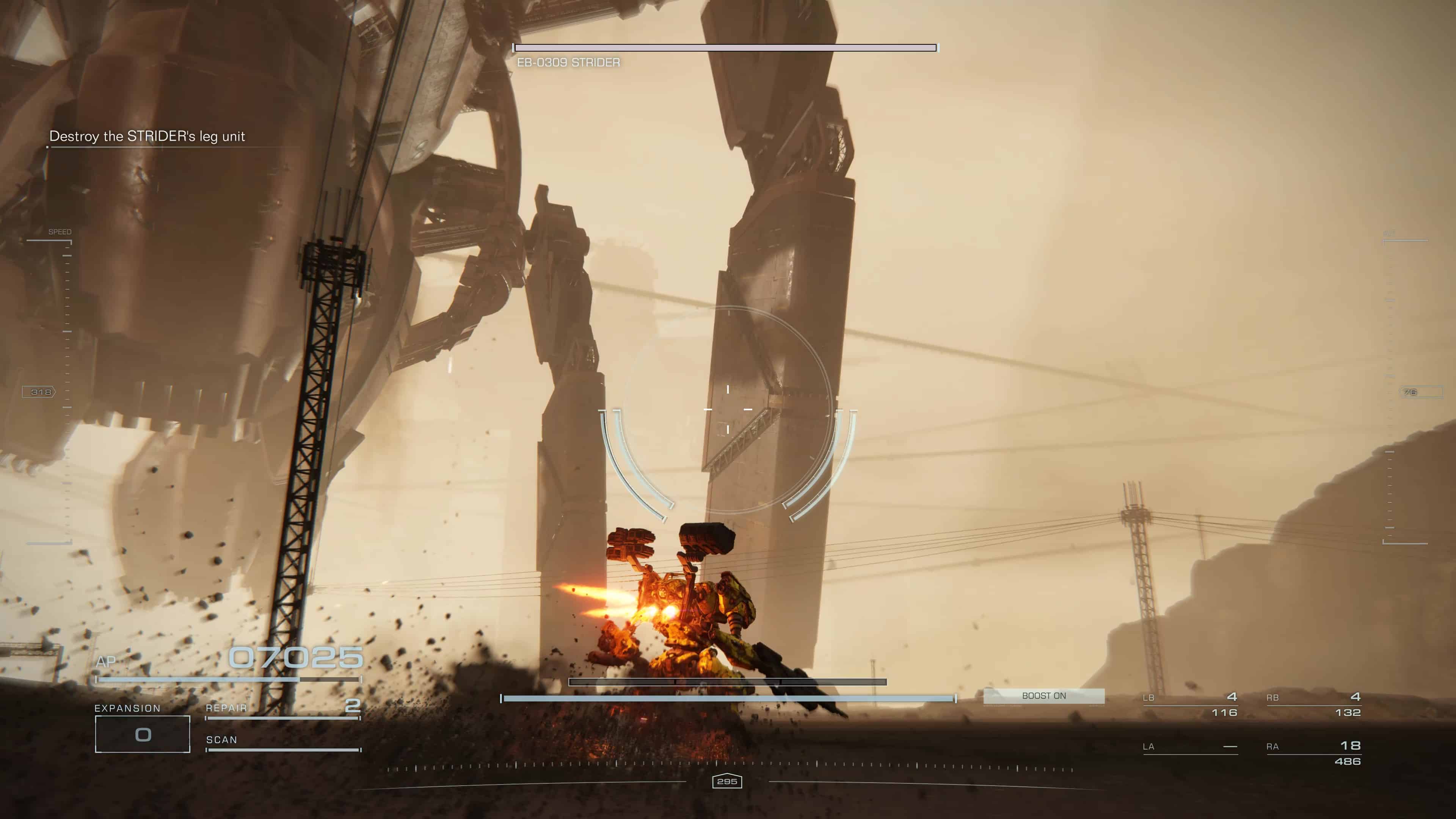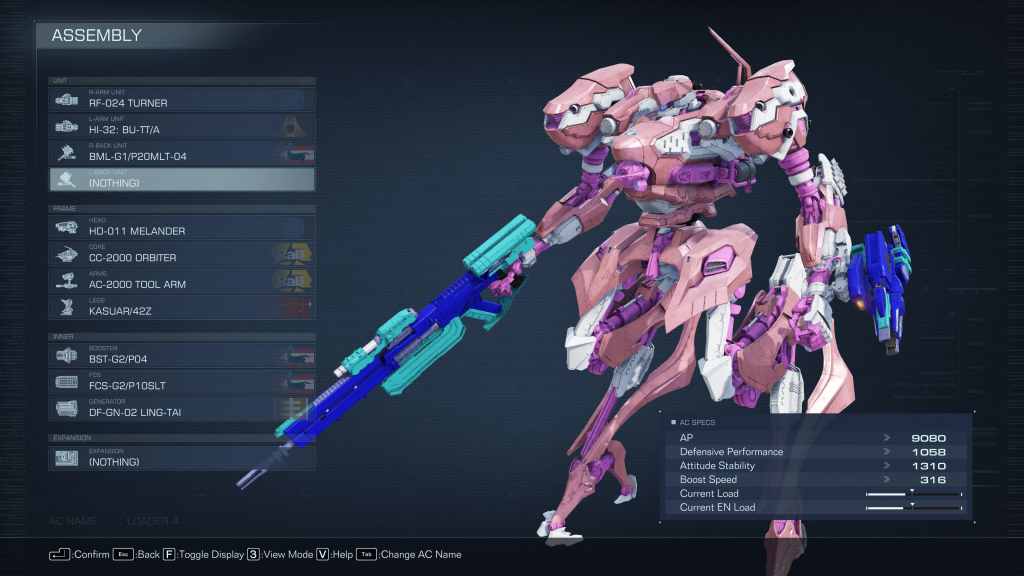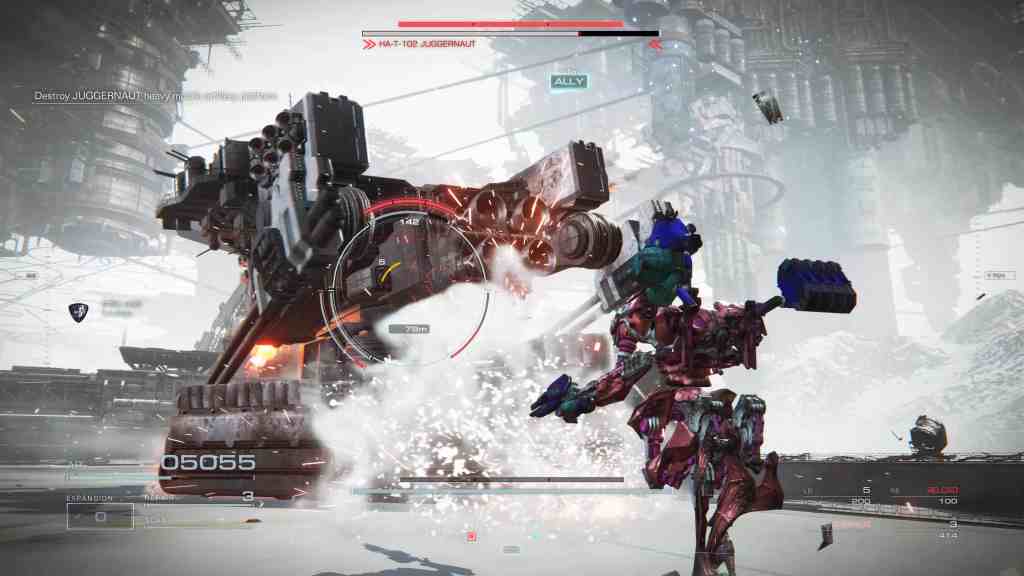I got this close to beating the boss of the Armored Core 6: Fires of Rubicon preview way too many times. I had basically perfected it by the end – I knew the correct timing and directions for dodges needed to avoid the barrage of missiles. I knew the exact distance to fall back when the boss discharged a giant sphere of energy. I could anticipate its flamethrower attacks, and knew when it was safe to go in for big melee damage.
The Bandai Namco representative was sitting right beside me, egging me on as I tried again and again, as time slowly ticked past the designated stopping point. ‘So close! That was a good run, next time for sure!’ But it seemed like every time I whittled the enemy down to a sliver of health, one or two hits away from death, it would pull out something new, something unexpected. Something that caught me completely off guard. ‘Oh my god!! He has TWO flamethrowers now?’

Up until this point, the first few hours of Armored Core 6 were surprisingly manageable. In my highly mobile mech, I was gracefully dashing and flying around the battlefield like a bird on ice skates. I was firing my missile volleys and ballistic weapons liberally, cutting through squads of lesser mechs without breaking a sweat. A few encounters with hardier and invisible enemies kept me on my toes, but otherwise, I was blowing through missions pretty quickly and efficiently – less than five minutes in some instances. But all of this gave me a very strong false sense of security, because when Armored Core was ready to test me, it really tested me, in the way that FromSoftware games so often do.
Souls-Core
Armored Core 6 (AC6) is the latest in the long-running, mech-focussed action series created by FromSoftware, who today are much more well known for creating a whole new genre of game, the ‘Souls-like,’ with games like Demon’s Souls and Dark Souls.
While Armored Core is very different to the style of game that really rocketed them to recognition, AC6 sees the company return to the series after a long hiatus, and after several very successful titles – Dark Souls 3, Bloodborne, Sekiro, and one of 2022’s greatest achievements, Elden Ring. The company has insisted that AC6 isn’t a Souls-like, and while that’s true in many ways, it still feels like there is a recognisable essence of the modern FromSoftware team in here.
Inside the Tin Can
Armored Core is mission-based. There’s linear storytelling. It’s focused on mobility, being in the air, and guns – lots of guns. You’ll spend a lot of time in the workshop, tinkering with your mech parts and making sure your paint job is just so. In my four hours with the game, it often felt like I had travelled back in time and was once again playing a somewhat unknown, Japanese-developed PS2 game from the 2000s (which is basically what Armored Core was).
You enter the world of Armored Core 6 as a nameless, mute mercenary codenamed Raven, tasked by your handler to take on jobs and missions for the various factions in a post-apocalyptic world. While you get entangled in everyone’s affairs, you also unravel the politics of it all, as well as the mystery of how you and your handler fit into it with a story told exclusively through radio conversations.
The jobs take place in bespoke stages whose bounds are immensely vast, allowing for more than ample room for your mech to liberally exercise its limited but invigorating flying capabilities. Beyond those bounds, however, impossibly enormous structures hang in the sky, and horizons stretch further than you can see, suggesting a world that is far bigger than you can imagine. Despite piloting a giant, hulking mech, Armored Core 6 makes you feel very small, a lot of the time.

While side missions are often quick sorties, useful for earning a bit of spare cash for upgrades later down the line, the primary missions in the opening hours of Armored Core 6 feature setpieces and fights that can be jaw-dropping. One particular stage where you have to scale and destroy a towering, walking, mining rig that dwarfs you like a human dwarfs an ant, is particularly memorable, and more of an exercise in platforming than it is in combat.
There are several moments like this in the first few hours of AC6, where your primary focus isn’t strictly a battle between you and another foe. And it’s clear that though combat is central to the game, other aspects like traversal, exploration, and strategic manoeuvring through overwhelmingly hostile zones are present in healthy doses to help mix things up a little.
One thing that comes in very handy during your missions is a toggleable lock-on mode called ‘Target Assist’ which automatically keeps your weapons trained on enemies, while sacrificing some precision. Though likely designed with approachability in mind, it comes in very handy when combat is not your primary focus. There’s a lot of joy to be found in the ballet of piloting the agile mechs of AC6, running circles around your enemies while peppering them with gunfire, and flying high above them to rain missiles down with the greatest of ease.
Mech It Your Own
But that doesn’t have to be your Armored Core experience. Like many good post-apocalyptic mech games that originated in the 90s (Front Mission, Mech Warrior, all great titles), a lot of the joy comes from customising your mech’s loadout, swapping out individual limbs, weapons and internal components to drastically change how they operate, giving them a meticulous paint job, and then taking them out into the field with pride.

That’s a core part of AC6, which boasts an enticing buffet of customisation options even during its first chapter. The way you build your mech, and what four weapons you decide to carry (if your build can carry that many) will drastically change your approach and effectiveness in certain scenarios – especially the boss fights, and especially when it comes to your selection of weapons and mech legs.
For example, one particular miniboss encounter saw me switching to extremely lightweight legs that let me leap faster and higher, making it much easier to get behind the enemy and attack its vulnerable areas point-blank with a shotgun and an energy blade. The infamous tank tread legs are also an option, designed for much hardier, but certainly not as a nimble, builds.
Thankfully, there’s no financial penalty for trying new parts on a whim – anything you purchase can be sold back at the same price, encouraging creativity and experimentation. Just the thought of the potential suite of options available once you get into the swing of the game makes me excited, as does the prospect of going through the game multiple times with completely different mechs.
FromSoftware has confirmed that Armored Core 6 will feature multiple endings, some of which can only be seen by taking on missions unique to the New Game+ mode (which lets you begin a new campaign with all your endgame parts and skills).

The first few hours of Armored Core 6 seem like a natural continuation of what Armored Core always was. 10 years of making Souls games have not somehow drastically altered what FromSoftware’s existing franchise is at its… core.
But in that boss fight I mentioned at the top, which closes out Chapter 1 of the game after a dozen or so missions, I felt the same kind of white-knuckle tension I felt when playing any of FromSoftware’s Souls games. The actions I was performing and the things I was keeping an eye on were different, but when I got into the rhythm of narrowly dodging a slew of attacks – that’s the kind of feeling so many FromSoftware enthusiasts strive for: A challenging battle hard fought, and a victory hard-won thanks to learning, planning, and executing.
Armored Core 6 will be released on 25 August 2023 on PC, PS4, PS5, Xbox One, and Xbox Series X/S.
|
|
|
|
GamesHub has affiliate partnerships. These do not influence editorial content. GamesHub may earn a small percentage of commission for products purchased via affiliate links.







